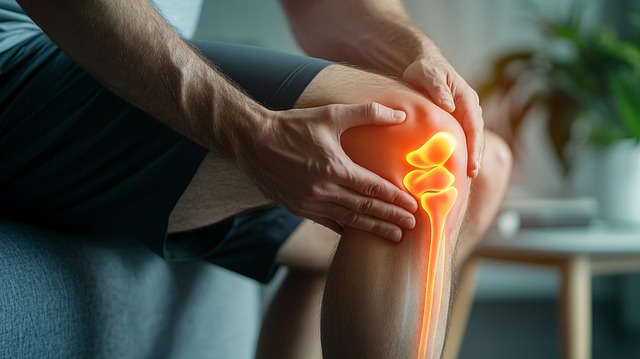Platelet-Rich Plasma (PRP) is a natural, autologous treatment that speeds up joint healing by concentrating growth factors from a patient's blood. The process involves drawing a blood sample, spinning it to separate components, and extracting PRP rich in these growth factors. This concentrated PRP is then injected into damaged joints or areas to stimulate repair, encourage new cell growth, reduce inflammation, and alleviate pain from conditions like arthritis, tendonitis, or sports injuries. While effective, temporary side effects may include mild pain, swelling, bruising, or discomfort. Proper post-injection care, including rest, ice, and cleanliness, is crucial for optimal results. Recovery timelines vary based on the joint treated and individual healing rates, with regular follow-ups recommended to track progress.
“Discover the transformative power of Platelet-Rich Plasma (PRP) injections for achieving optimal joint regeneration. This comprehensive guide delves into the science behind PRP, its role in promoting natural healing, and how it can alleviate pain and improve mobility. From understanding the step-by-step procedure to exploring potential benefits and side effects, this article equips you with valuable insights. Learn about post-treatment care and recovery timelines, empowering you to make informed decisions for your joint health.”
Understanding PRP and its Role in Joint Regeneration
Platelet-rich plasma (PRP) is a natural, autologous (meaning from your own body) treatment that plays a pivotal role in joint regeneration. It’s created by taking a small sample of your blood and spinning it in a centrifuge to isolate the platelets, which are rich in growth factors. These growth factors are powerful signallers that help stimulate and accelerate the body’s natural healing process.
When injected into damaged or degenerated joints, PRP acts as a catalyst, promoting tissue repair and regeneration. The growth factors encourage the proliferation of cells responsible for building healthy cartilage, tendons, and ligaments, leading to improved joint function and reduced pain over time. This innovative approach has gained significant attention in sports medicine, orthopaedics, and aesthetic procedures due to its potential to offer long-lasting relief without invasive surgery.
The Step-by-Step Process of PRP Injection Procedure
The PRP injection procedure for joint regeneration involves several precise steps. It begins with a small sample of your blood being drawn and placed in a centrifuge machine. This machine spins the blood at high speeds, separating its components. The specific focus is on the platelet-rich plasma (PRP), which contains concentrated growth factors that promote healing. Once separated, the PRP is carefully prepared and injected into the targeted joint or area requiring regeneration.
The injection itself is typically quick, with the healthcare provider guiding a fine needle through the skin to reach the treatment site. The PRP is then injected, delivering a powerful boost of healing components directly into the damaged tissue. This process stimulates the body’s natural ability to regenerate and repair, fostering new cell growth and reducing inflammation over time.
Potential Benefits and Side Effects to Consider
Potential benefits of PRP injections include its ability to promote joint regeneration with PRP, reduce inflammation, and alleviate pain associated with various conditions such as arthritis, tendonitis, or sports injuries. The process involves extracting a patient’s own blood and separating out platelet-rich plasma (PRP), which is then injected back into the affected area. This concentrated solution is rich in growth factors that stimulate tissue repair and regeneration.
While PRP injections show promise, it’s crucial to be aware of potential side effects as well. Common temporary side effects include mild pain, swelling, bruising, or discomfort at the injection site. In rare cases, infections or allergic reactions may occur. It’s important to discuss these risks and benefits with a healthcare provider before undergoing any procedure.
Post-Treatment Care and Recovery Timeline
After your PRP injection procedure, proper post-treatment care is essential for optimal results in joint regeneration with PRP. It’s recommended to rest the treated area for a few days, avoiding strenuous activities or exercises that may cause discomfort or strain. Applying ice packs can help reduce any swelling or inflammation, providing temporary relief and minimizing potential side effects. Keeping the injection site clean and dry is crucial; gently wash the area with mild soap and water, and avoid using any lotions or creams until advised by your healthcare provider.
The recovery timeline varies depending on the specific joint treated and individual factors. In most cases, you can expect some mild discomfort, such as soreness or bruising, which typically subsides within a week. As your body begins to heal and rebuild tissues, you may notice improved mobility and reduced pain over several weeks. It’s important to follow up with your healthcare provider as directed to assess progress and ensure the best possible outcome in your joint regeneration with PRP journey.
PRP injections offer a promising approach to achieving joint regeneration, providing a natural solution for pain relief and improved mobility. By harnessing the body’s own healing capabilities, this procedure has the potential to significantly enhance quality of life for individuals seeking alternative treatments. While minor side effects may occur, the benefits of PRP injection can be substantial, making it a valuable option in the realm of joint health management. For those considering this treatment, understanding the process and post-care requirements is essential to ensure a positive outcome.
